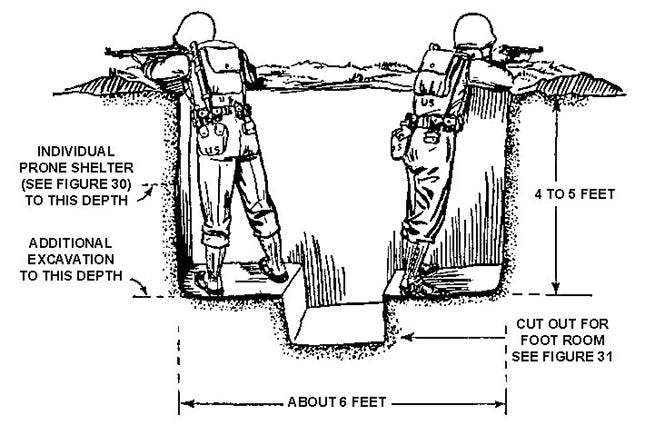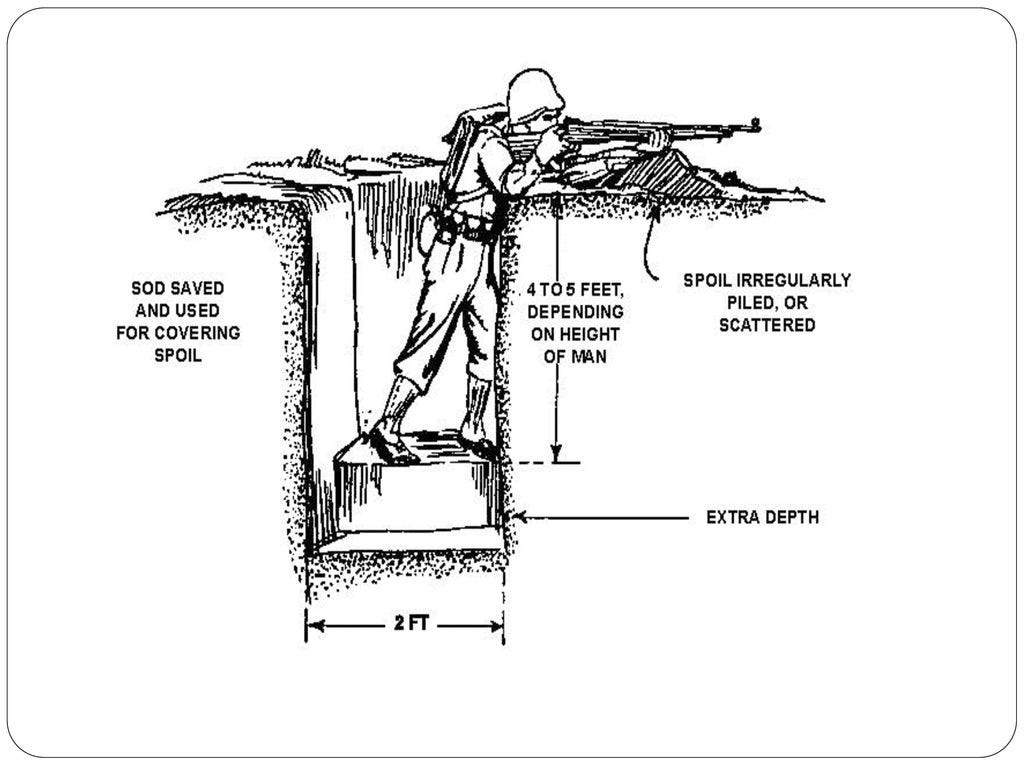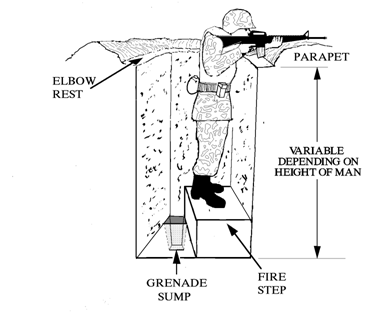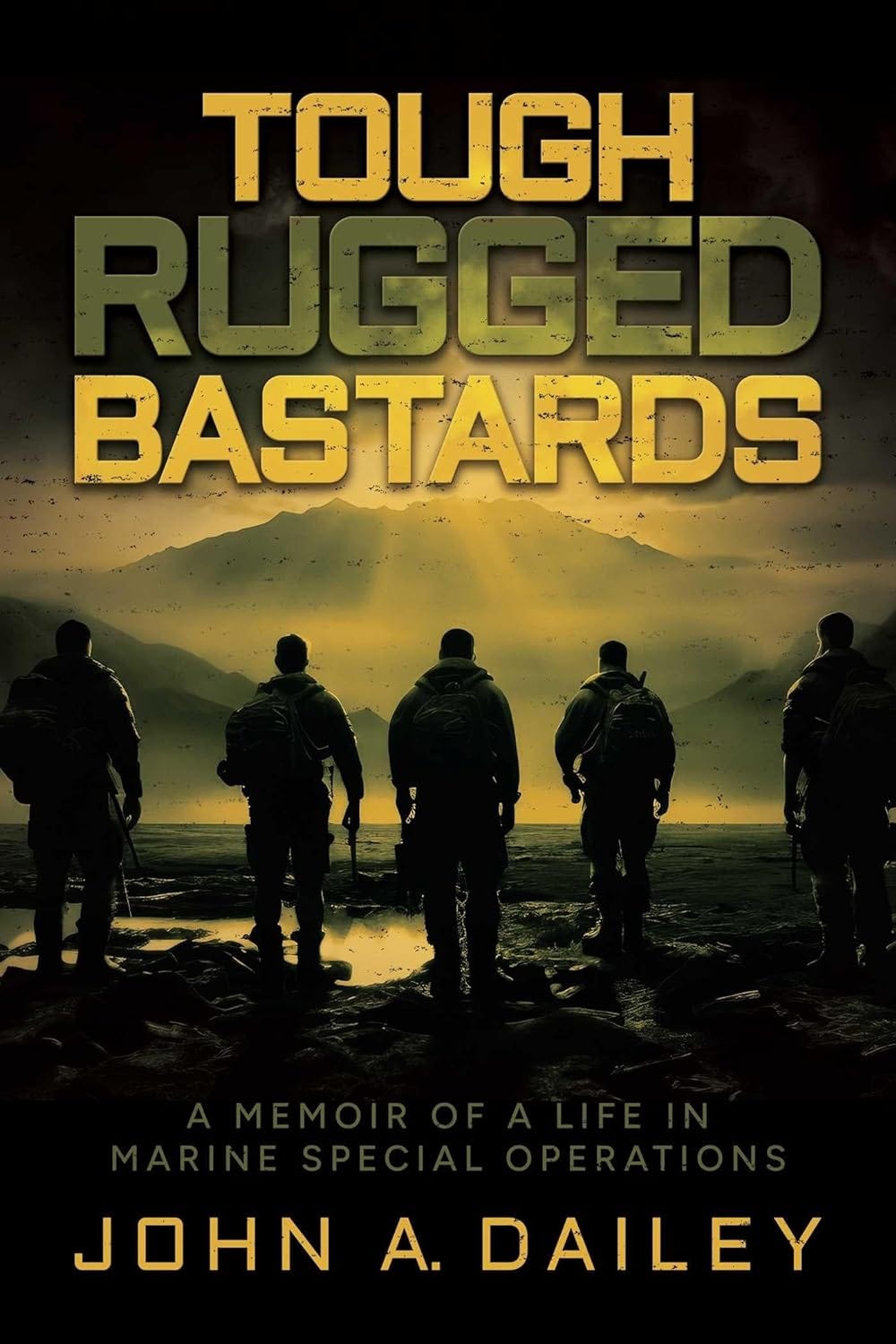I was a young lad going through infantry school and Camp Lejeune, North Carolina back when the water was full of dry-cleaning chemicals.
Each week we would hike into the woods and swamps of the training areas practicing raids and ambushes and each evening we would stagger into our bivouac position for the night and establish a defensive perimeter.
And while we hoped that we would somehow escape it, inevitably the ‘word’ would be passed in a whisper around the circle from man to man, ‘Dig in.’
Working on two-man teams, one would maintain security while the other unfolded the standard issue entrenching tool and started digging.
A textbook 2-man fighting position is armpit high, six-feet wide and 2 feet across (this is supposed to ensure that an enemy tank can roll over top of you without the sides collapsing). It has two fighting steps and a grenade sump for when a charging enemy soldier heaves a grenade into your position.
But our fighting holes never looked like the images.
Ours more closely resembled shallow graves, barely deep enough to lay down in. The thick network or roots and water table meant that we were soon hacking into a muddy mess.
So, we dug a hole deep enough to satisfy our instructors, then took the opportunity to fall, exhausted into our muddy pit for a few hours of sleep before the sun came up.
Each morning the man on security woke his partner 30 minutes before daylight (or BMNT) to ‘stand to’ because dawn and dusk are the most likely times for an attack.
When stand to concluded and we were hoping to get some food down out necks, an instructor would always come by and demand that we improve our fighting position.
Dig it deeper, fortify it, camouflage it, organize your equipment… always improve it.
That’s good advice for life.
We can always improve our position.
We can always find opportunities to make something better.
We can do a little thing that makes our position more tenable.
And over time, those little things add up.
Or as Ben Franklin said, “Little stokes fell great oaks.”
That’s it for this week. Until next time, keep Walking Point.
My episode of the Hard to Kill podcast with Dave Morrow just released. Check it out!
If you haven’t read Tough Rugged Bastards yet, what are you waiting for?
If you have, have you left a review on Amazon?
On my other, saltier substack, Ruck The F*ck Up, I’m getting back into the best shape of my life. If you are interested, come on over.
Thanks for reading. Until next time, keep Walking Point.









Great analogy for life. Better than "Make your bed". It's preparation beats luck.
It also encourages adaptability.
When we trained in the Mohave desert we needed overhead cover. We started to transport corrugated medal, fence stakes, rolls of wire fencing and logs. We mounted them on the sides of armored vehicles such as tanks and M113s. We transported them by C-5s, road and rail.
The SF teams that conducted SR deep into Iraq during Desert Storm, such as SFODA 525, had to develop hide sites that they could transport in by helo and foot.
Good old GI initiative had mechanics developed on the fly tank "Rhino" plows welded onto tanks to bust through the hedge rows.